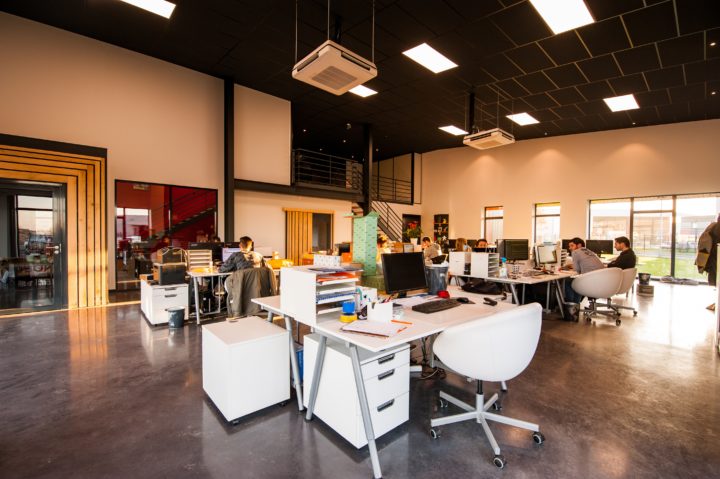The following contribution is from another author.
Here’s the reality: your concept of a workplace is gone-forever. It now belongs to a different era when there’s no COVID-19 pandemic yet.
What is at present is the new normal that demands a lot of adjustments to make sure employees feel safe and comfortable despite the pressing threat of the virus.
The question is, how do can Filipino companies do it? Here are four ideas on how to make their office new-normal ready:
1. Get Rid of the Open-Floor Plan
There was a time when the open-floor plan was considered a possible holy grail for more effective collaboration, innovation, and creativity. In fact, its impact was so significant that Mark Zuckerberg commissioned his Facebook headquarters to follow the same layout, making it the biggest open-floor company in the world (so far).
However, even before the pandemic, problems with open-floor designs began to appear, including the lack of privacy, the higher risk of micromanagement, and the discomfort it brought to the introverts. The coronavirus made it even worse by making the entire floor space a potential ground zero.
For the new normal, companies need to ditch the open-floor setup and instead embrace a more flexible, probably modular, design. This means that one can easily convert the space into small cubicles for individual workers or exclusive meeting rooms quickly.
2. Opt for a Hybrid Workplace
The COVID-19 pandemic drove millions of employees to work from home. In the Philippines, that’s over 85 percent of the workforce ready to do their job remotely. Now, it looks like not everyone is willing to return to the office anytime soon.
In one of the surveys by FlexJobs, over 60 percent of the respondents said they plan to remain full-time remote workers even after the pandemic. Some are even willing to quit if it doesn’t happen.
Unlike other countries, the Philippines doesn’t have the sufficient infrastructure to support telecommuting. However, workplaces may adopt a growing trend worldwide called a hybrid setup.
The concept is simple: allow employees to have a more flexible schedule. They may choose to work from home or report to the office a few times per week. For example, they may need to be physically present three times in seven days and spend the rest at home.
A hybrid approach in the workplace is likely to reduce the odds of having a high turnover rate and a costly recruitment process. It also saves the company money since it may no longer have to rent a huge space to accommodate everyone.
3. Decrease the Stress
The COVID-19 pandemic highlighted one of the pressing but often-buried issues in the workplace: stress and burnout. In an SWS survey at the height of the health crisis in 2020 revealed that an overwhelming 90 percent of Filipinos experienced a great deal of stress.
Stress can severely impact an employee’s performance, reducing their efficiency, productivity, and creativity. It can also be a trigger for a high turnover rate.
This problem is less likely to disappear even when the pandemic is over. Fortunately, companies can help their employees cope in different ways.
One of the effective strategies is to incorporate plants, such as a green moss wall. In a 2020 study by the American Society of Horticultural Science, merely seeing greeneries nearby can already help lower the feelings of anxiety among workers.
Meanwhile, a 2014 research of the University of Exeter revealed that a spartan office might not exactly promote productivity and efficiency as most companies think. Instead, adding plants in a bare space can increase employee output by as much as 15 percent. It could be because these greens are relaxing.
4. Improve Ventilation
The case studies featuring a Chinese restaurant, a Hubei-bound bus, a musical group in the United States, and a call center in Seoul showed that the COVID virus might linger in the air for some time, increasing the chances of more indoor people getting infected. Worse, poor ventilation may cause it to spread in other areas.
Before businesses open their doors again for their workers, they need to ensure their heating, ventilation, and air-conditioning (HVAC) systems are up to standard. Dirty air should go out, the setup must have an excellent filtration capability, and HVAC needs to increase the circulation of outdoor air.
When possible, workers need to have convenient access to the outdoors like a garden, balcony, or alfresco setting. The office may also benefit from opening its windows.
Changes are difficult, but resisting them makes the transition even harder. The faster offices can adapt to the new normal, the sooner employees feel more comfortable to return to their workstations.
















